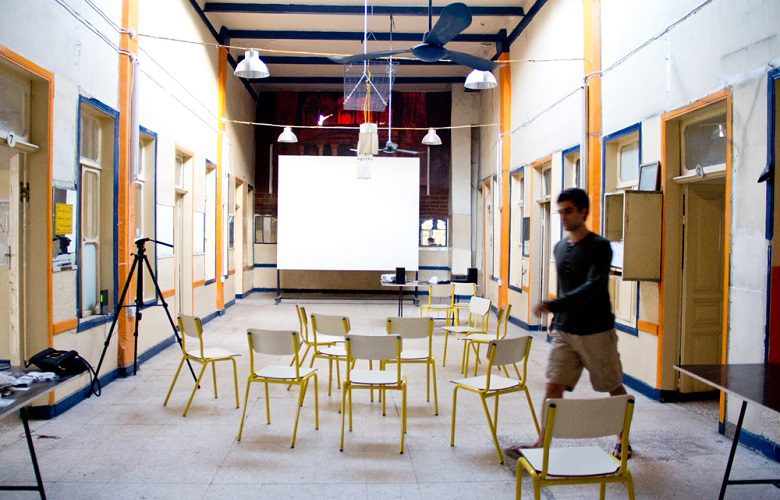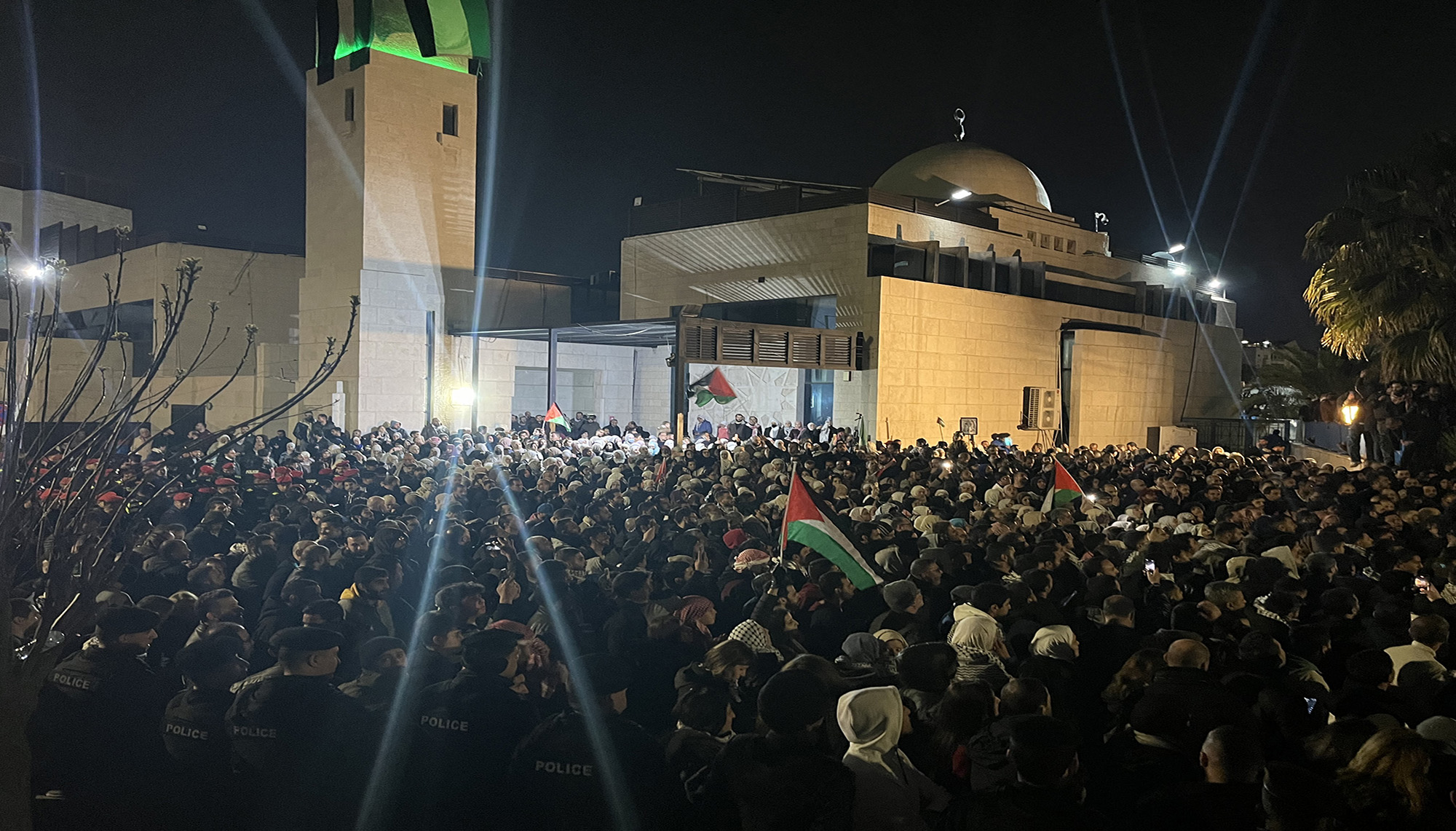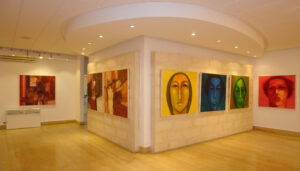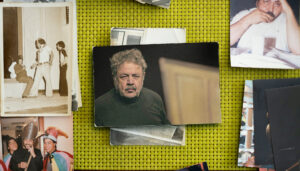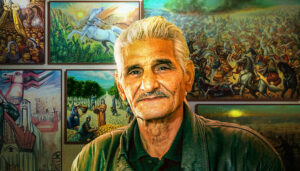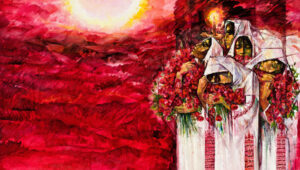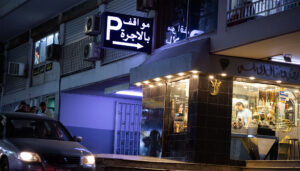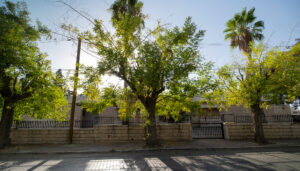By Lidija Sabados. Photography by Hussam Da’anah.
“A large part of seeing depends upon habit and convention.”
– John Berger
A museum of found objects. Doppleganging workshop. Sound mapping walks. These are some of the projects being developed at the Spring Sessions, an intensive three-month learning program for artists and cultural practitioners. Conceptualized just a few months before its April 2014 start date, the program’s organizers, Toleen Touq and Noura Al-Khasawneh, were looking to engage in arts education. They decided to collaborate on a new initiative, an experimental residency program for artists, architects, filmmakers, curators, urbanists, and community organizers in the creative fields.
The approach of the Spring Sessions is “to ‘unlearn’ existing ways of seeing, in order to create new perspectives and push the boundaries of creative production.”
Caption: Over the course of several weeks, the participants watched the four-part 1972 BBC television series Ways of Seeing with art critic and writer John Berger. The influential series criticizes traditional Western aesthetics by raising questions about hidden ideologies in visual images. In this first segment, Berger explores the story of European art appreciation.
The curriculum is organized around three themes: ‘ways of seeing: building group dynamic and creative learning skills’; ‘body, time, and space: practical and theoretical knowledge sharing on artistic practice, and its relation to the urban environment’; and ‘storytelling: including methods of documentation and developing concepts into art projects’.
The group meets four times a week, and each participant works on their own personal project while engaging with the resident artists and collaborating on collective interventions.
“We wanted to create a space that is not intimidating,” said Noura. “The model of presenting art in Amman is always in closed-off buildings… You actually don’t have access to the art in the streets.”
Noura previously worked at Darat Al Funun, but then left to study in London. “I knew if I was going to come back to work in Amman in anything related to the arts, it was going to be educational.”
Both Noura and Toleen wanted to create a holistic program that tackles the arts from different perspectives and focuses on the relationship artists and the public have with the city.
They knew each other but had never worked together before. “We realized that we kind of have the same view point of Amman,” said Toleen.
“I’m very critical of Amman, but it’s only because I love it. I think what brought us together is that we weren’t trying to escape, which I feel like a lot of people try to do. And we wanted to do something here.”
The program is entirely locally funded, and the organizers are proud of the fact that they didn’t have to seek international funding.
The program comprises 19 participants from Jordan. A number of local and international conveners from Egypt, Palestine, Iraq, Lebanon, Kuwait, South Africa, the UK, and the USA were invited to give workshops and lectures on subjects related to artistic practice and theory inspired by experimental and interactive pedagogy. Some artists are also mentoring the participants for a period of three weeks each, while simultaneously developing their own personal projects.
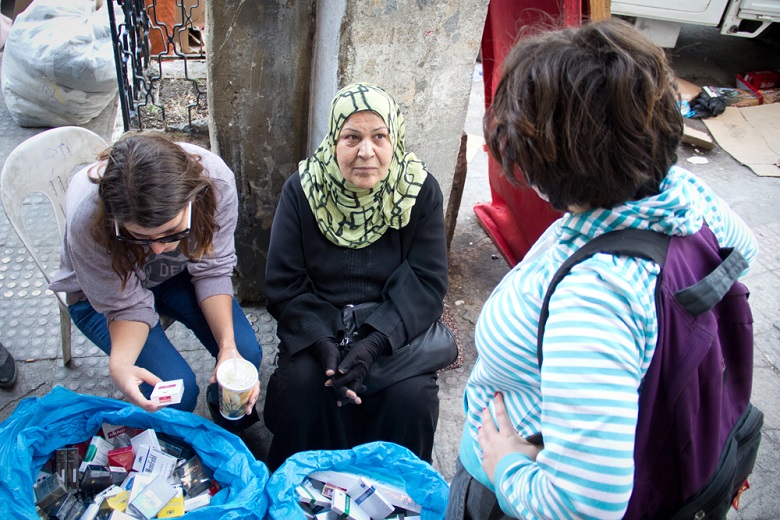 Caption:Spring Sessions participants Rola Khouri and Shereen Zoumot interviewing an Iraqi woman selling cigarettes in downtown Amman.
Caption:Spring Sessions participants Rola Khouri and Shereen Zoumot interviewing an Iraqi woman selling cigarettes in downtown Amman.
One of the resident artists is Eric Gottesman, who works on reimagining interactions with strangers and the relationship between artist and subject. In one group exercise, Eric asked the participants to interview street vendors in the downtown area who are part of the “basta” system. The group then reconvened and ran a “CSI basta” workshop to collect data on the phenomenon. The participants developed an intervention that included outlining the “basta” system players on colored banners hanging outside of the building, and recorded the interactions with photos and time-lapse video.
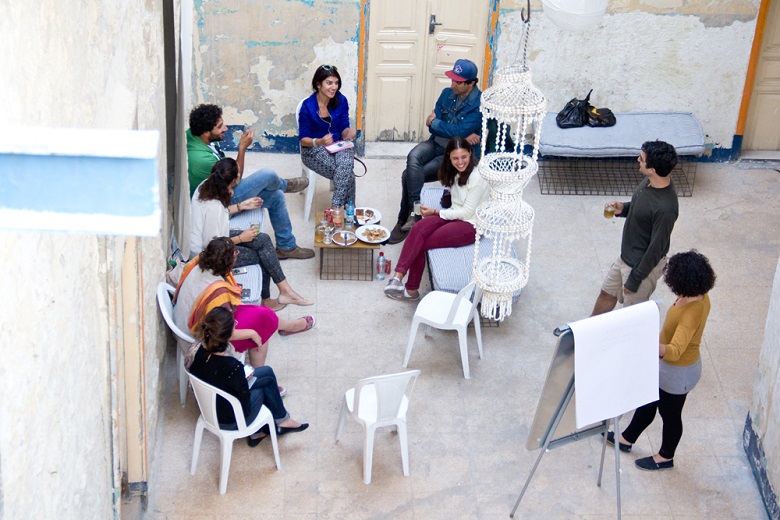 Caption:A group session following the “basta” interviews with artist Eric Gottesman and Toleen Touq as facilitators.
Caption:A group session following the “basta” interviews with artist Eric Gottesman and Toleen Touq as facilitators.
Another workshop by Basma Alsharif will be centered on the theme of doppleganging: the idea that one can be in two places at the same time. “The is used to define the Palestinian condition. The idea of being here but being in Palestine, or wanting to be in Palestine, and creating a new narrative for that” said Toleen.
This concept of experimental arts learning environments is unique to Amman, but not new to the region. Similar interdisciplinary arts study programs, including MASS in Alexandria, and the Home Workspace Program in Beirut are redefining spaces and ideas about artistic learning and practice.
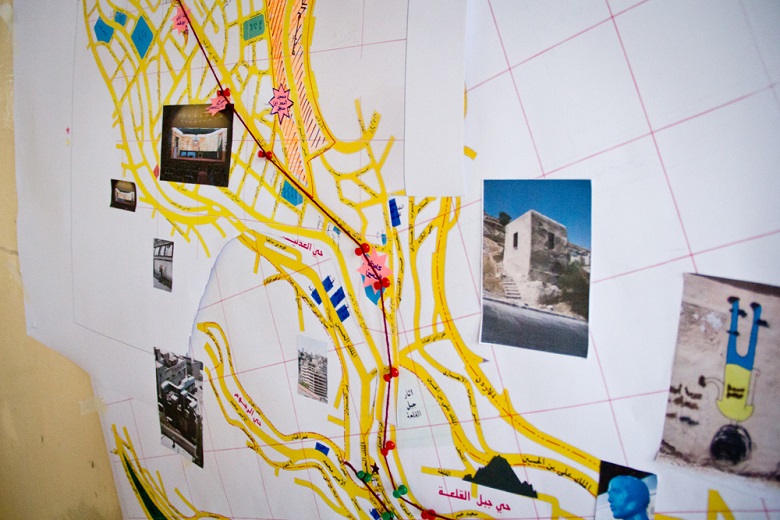 Caption:The results of a mapping exercise with architect Omar Nagati hang on the walls of several rooms.
Caption:The results of a mapping exercise with architect Omar Nagati hang on the walls of several rooms.
In line with their vision, the organizers chose the old King Ghazi hotel in downtown Amman as a pilot location. The original building was divided into two houses, a “dhan”, a stable and rest house on one side, and a family house on the other. Ali Alkurdi named the hotel King Ghazi (after Ghazi bin Faisal, the King of the Hashemite Kingdom of Iraq from 1933 to 1939) as a way to antagonize the British, whom he suspected had something to do with the King’s mysterious death.
As the program developed, and the participants spent time in the space, the building became an important element of the sessions. Participants are currently working on several projects that explore the history of the hotel, its architecture, and its role in the life of the center of Amman. Lamia Raei, a social anthropologist whose grandfather constructed the building in 1918, heard about the program from a friend. She contacted Toleen, who invited her to give a workshop about the history of the space. Since then, Lamia has been working with eight participants on an ethnographic study of the building and its surroundings.
Interested in a chronological review of how downtown emerged, the project touches upon many layers in terms of history, demography, social relations, and the city’s transition to what it is today. The objective of the ethnographic project is not to formulate an “orientalist perspective of downtown, and, definitely, not a view of it as a ‘hip’ place”. It rather aims to uncover ‘what it means; who the people coming in and out are; what a downtown in Amman is, what it has been so far, and what it is about to become,” Lamia said.
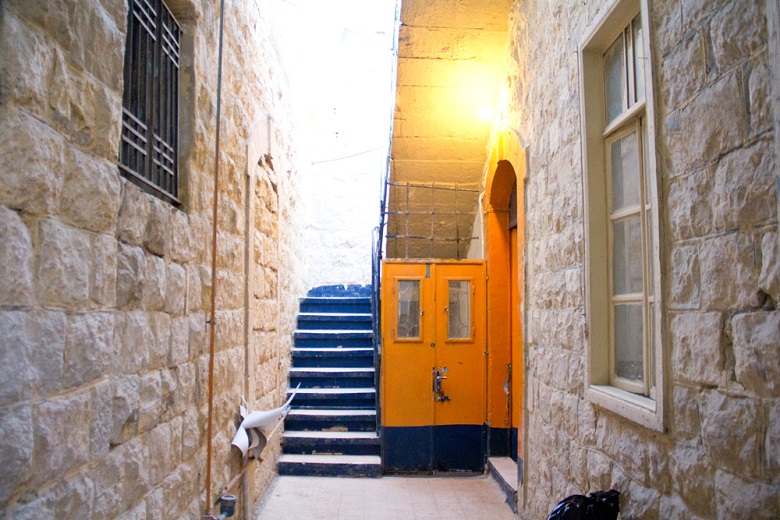 Caption:The entrance to the old King Ghazi hotel on Saadeh Street. Formerly, the building housed the Ministry of Justice and the Hamdan Café, where Sheikh Hussein Tarawneh held the first Jordanian national conference. The building also hosted the guests of Glubb Basha and King Abdullah the 1st.
Caption:The entrance to the old King Ghazi hotel on Saadeh Street. Formerly, the building housed the Ministry of Justice and the Hamdan Café, where Sheikh Hussein Tarawneh held the first Jordanian national conference. The building also hosted the guests of Glubb Basha and King Abdullah the 1st.
The project aims to document the different transitions of downtown, and provide an informal history different from the state’s perspective. “Rarely have we had the informal history being told from someone other than the state, and that I feel does not do justice to the history here.”
“I like the idea of having spaces where people do not feel like they have to be part of a certain class—we are a very, very class divided society. And I like the idea of having places that can become platforms and hubs for interaction, without imposing on their surroundings,” said Lamia.
This has been an unplanned outcome of the Spring Sessions and the space it occupies: by occupying the formerly derelict building, the participants are reconnecting with the downtown’s past and its people, while also exploring the contemporary culture surrounding it.
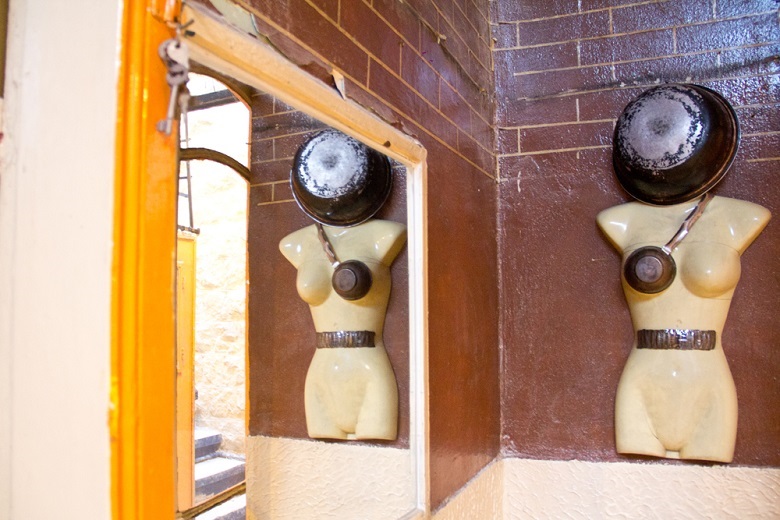 Caption: Participants collected objects from the neighborhood and created a museum of found objects with artist Rheim Alkadhi.
Caption: Participants collected objects from the neighborhood and created a museum of found objects with artist Rheim Alkadhi.
“Downtown used to be a collective cultural and political hub, with cinemas and shops and craftspeople. I remember designing shoes with craftspeople downtown. Having a hub, a simple one again, is not completely against the original function of what downtown was.”
During the sessions, various collaborative projects have emerged, including the idea to create a book to document the experience and act as another art project in and of itself. This book will include a collection of recipes made during the sessions (the group invites a guest to cook for them with local ingredients once a week).
“What is really interesting for me about this space and this program is the community aspect of it. I really like that the King Ghazi hotel is becoming a community space. There is nothing like that in Amman,” said Deema Dabis, a filmmaker and Spring Sessions participant.
The Spring Sessions will culminate in an ‘open weekend’ on the 26th and 27th of June, , where the public will be invited to meet the participants and artists. Ideas and projects developed throughout the program will be presented.
